Inertia
Viktor Alimpiev, Sergej Bugaev Afrika, Bastiaan Geleijnse, Maarten Heijkamp, Irene Janze, Iris Kensmil, George Korsmit, Vladimir Kustov, Sands Murray-Wassink, Anatoli Osmolovsky, Pavel Pepperstein, I van Razumov, John Reid, Roos Theuws, Jean Marc van Tol, Gluklya Tsaplya, Albert van WestingIt is impossible to discover new worlds, or to fight without moving; it is equally impossible to observe historical changes or judge your place in a history without standing still. Reflecting on and judging developments and processes requires a more or less inert state. The active and the contemplative life alternate. Not just in the life of the individual, but the life of society. And the same applies to eras.
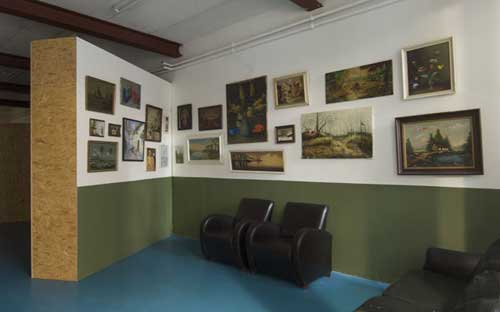
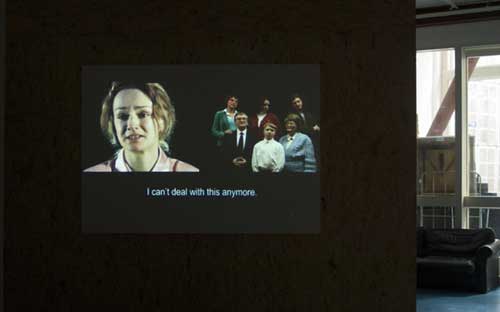



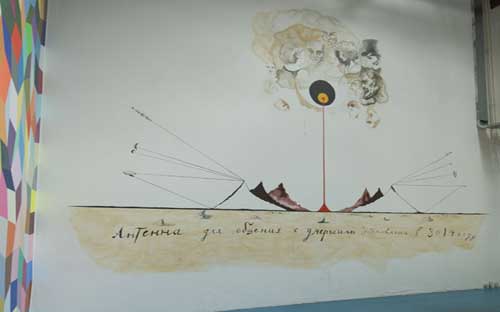
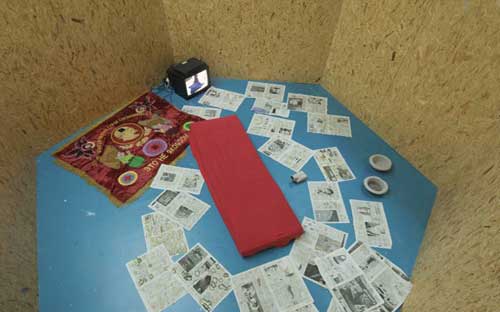

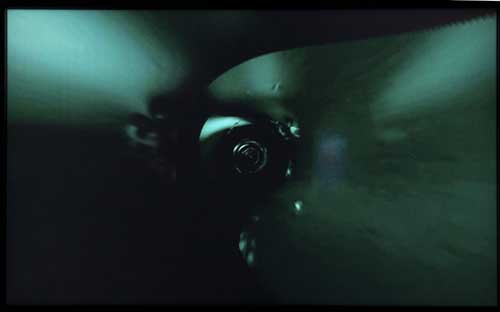
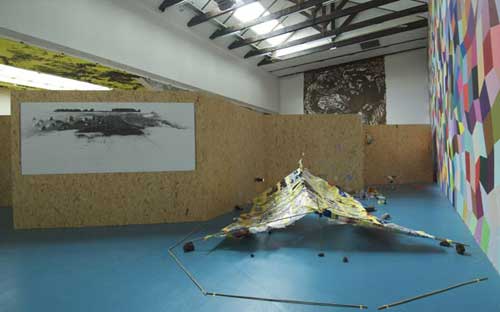
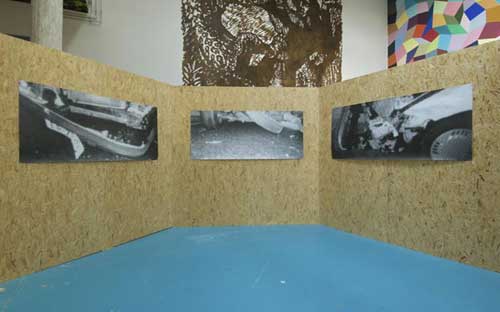

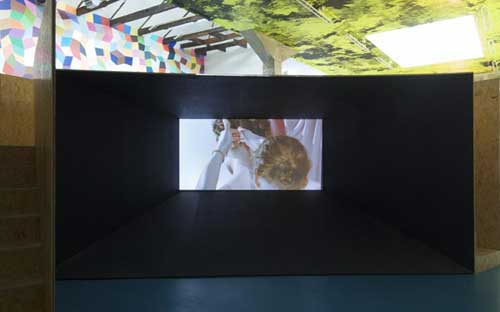

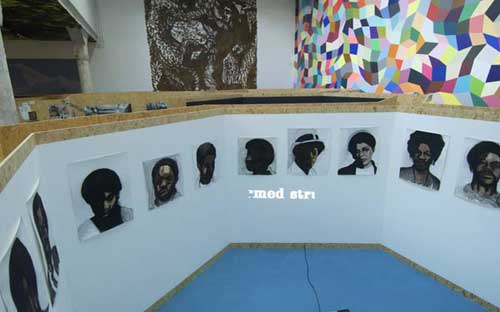

The polarity of movement and inertia is also evident in the body. The dynamic of the limbs and metabolism contrast with the head, calmly carried about by the body, in which the brain floats weightlessly in fluid, nestled in the dark cavity beneath the skull, is connected to the senses by fragile nerves.
‘Inertia’ is the title of the new W139 exhibition curated by Erik Hagoort. The work of 8 Russian and 8 Dutch artists are presented in a hexagonal structure. The structure has been designed especially for the exhibition to obstruct any interaction between the various artworks. In the face of the tempestuous social and economic developments in Russia and the impious obsession with growth and innovation in the Netherlands, inertia has become our new sobriquet.
Gijs Frieling, director W139
Inertia
Art can be tough; even irrefutable. And artists have the option of assuming a personal position of carving out their own path. Some artists do. But how do they go about this now, when most people have chosen to be vacillators rather than anything else? This is the central issue in ‘Inertia’, the Russian-Dutch diptych with exhibitions and symposia in St. Petersburg (2006) and Amsterdam (2008).
Breaking free of belief in progress to pursue an alternative, unorthodox way of life, is a familiar Russian theme. By intentionally ‘sitting with arms folded’, the former civil servant in Dostoevsky’s Notes from Underground (1864) aims to lay the foundations for breaking free; he calls it ‘inertia’.
In a similar way, in the 1990s, a number of Russian artists sought alternatives to the hyperactive avant-gardism that had art in a stranglehold after the collapse of the Soviet Union. Avant-gardism has calmed down and now, even in Russia, the business of art is booming, too. But these artists are still edgy, still alert.
What is clearly emerging in Russia is also evident – in a different way - among a number of artists in Holland. These artists are also seeking ways of shaping their lives and art without their work responding to change or current situations, or without putting it into perspective: a fruitful inertia. The project attempts to explore this standpoint, and have a hand in shaping it.
Erik Hagoort
Publications
Artists’ newspaper HTV de IJsberg will keep track of the Amsterdam side of the project with a special edition about Inertia
The book Inertia is a collection of essays and artists’ contributions, highlighting the first part of the project in St. Petersburg, 2006.
Activities
During the opening weekend in W139 on 6 and 7 September, the public is invited to participate in the programme of lectures, dialogues, performances and interviews. Dutch and Russian artists, critics, philosophers and Slavists will also be involved.
Exhibition participants
Anatoli Osmolovski gained a reputation for activist performances in the 1990s. Since 2002 he has been working on a series of ‘inert’ objects. The items are reminiscent of nuts, fruits, breads and toys. Emblems of cults: capitalism, the media, politics, religion. His copper ‘tanks’ and the series of ‘breads’ displaying the vague contours of saints and aliens, drew considerable attention during Document 12 in Kassel. In Amsterdam, Osmolovski is exhibiting previously unseen works: four painted, wooden ‘termite mounds’.
Pavel Pepperstein sketches visionary graphic stories. One day he hopes that people will simply exist, be representatives of life, rather than striving to become something or someone. In an open letter of protest to Poetin, the artist argued for the construction of a new city to be called Russia, precisely halfway between St. Petersburg and Moscow. Let the new building, that is now destroying Moscow, happen there, he proposed. But let it unfold in a visionary way: over the coming millennia, the buildings will be able to dance and communicate with the dead. In W139 Pepperstein will paint some of these buildings, metres high, on the walls.
Sergei Bugaev Afrika creates metaphors for the ‘psychic condition of art’. He argues that art should be protected from itself. Artists are too driven by the ambition to be discovered. But this ‘frenzy’ only damages the artists and their art. Someone needs to intervene. Bugaev takes the lead with a substitute ‘compulsory’ hospital admission. He spends 24 hours in an isolation cell on the psychiatric ward of the AMC. Bugaev distils the observation material footage into an installation in W139.
Ivan Razumov’s drawings are in the tradition of Russian illustration. He recently produced the 240 illustrations for the Russian handbook about 240 films, compiled by Russian film connoisseur Joeri Gladilshikov. For W139 he has created an enormous wall drawing inspired by drawings of his grandfather, Fjodor Konstantinov, a celebrated illustrator of Soviet school books. An after-image of what, for years, had been in the class rooms of millions of Soviet Union citizens.
The duo Gluklya & Tsaplya (Natalia Pershina and Olga Egorova) came to attention with performances about famous female characters from Russian literature. Both are active members of Sjto Delat? (What is to be done?), a working group of artists, philosophers and writers striving for alternative forms of cultural critique. In W139, Gluklya & Tsaplya will present the video 'Becoming Mothers' (2007), a wry and humorous Greek tragedy in which a family ‘chorus’ comments on the joys and frustrations of young mothers.
Viktor Alimpiev makes films about fundamental human expressions. His characters cluster close together, and sing, yell, tap, hum, tremble or gasp for air. The closer they get to each other, the greater the tension between individuality and merging with the other. In the Lowlands, Alimpiev is well-known, and has presented work at the SMAK in Gent (2007) and, recently at Impakt Festival. In Amsterdam he is screening a new piece, My Absolution (2008), the basis of which was created while artist-in-residence during the Impakt Festival.
Vladimir Kustov is presenting his new installation: Crystallisation. His work is based on imagining the unimaginable: death. The recent technique used to transform the ashes of a deceased into diamonds, is the basis of Kustov’s installation which comprises new paintings and photos and a documentary video about cremation.
Iris Kensmil explores the tradition of black emancipation. She underlines the fact that emancipation cannot exist without history; it relies on the power – and sometimes the burden – of previous generations. Many of her paintings are as layered as a palimpsest; slogans, cries for freedom and manifestos loom through the impasto paint. In W139 she will project writings onto murals.
Maarten Heijkamp makes large photo positives, lit in his enormous camera the size of a container. On the ground in front of the lens, he sets out tools, machinery and people, scattering them with white powder. Then he photographs the staged contours whited out on the ground, which reverse light and dark. It was by employing this reversal that Heijkamp created his monumental 'Powder Men’.
The makers of Fokke & Sukke - John Reid, Bastiaan Geleijnse and Jean-Marc van Tol – will present a selection of their most inert cartoons. Slumped on the sofa, Fokke & Sukke do nothing. Taking action isn’t their thing. They comment on a world gone mad. Like for former civil servant in Dostoevsky’s Notes from Underground. The makers will also display their latest paintings in the Fokke & Sukke salon.
With his photographs and videos, Albert van Westing shows everyday acts like writing, sitting and reading plunge us into a state of concentration and intimate separation. Van Westing focuses on the attention with which people perform these acts. For the exhibition, Van Westing has created the piece ‘Vincent’ in which, with enormous concentration, a painter carefully applies white paint, obliterating the graffiti sprayed onto an electricity sub-station.
In his work, Sands Murray-Wassink explores alternative means of representing homosexuality, masculinity and intimacy. He deliberately and systematically forges connections with the history of feminist art and invites female artists to participate in personal collaborations. For this project, he invited Munich-based artist Lisa Erb, to work on structuring a dialogue with him.
Artist/geologist Irene Janze draws Cityscapes on tracing paper, zooming in from macro to nano level and back again. She presents the world of art to us in the same way. In W139 Janze presents the installation Nanonomade. She humorously reduces global art collection to a tent fabricated from plastic bags from museums around the world. In front of the tent a collection of tiny drawings are spread out on the ground, inviting the viewer to zoom in on them. The closer you get to the smallest sketch, the larger the tent of art becomes.
Roos Theuws devotes her work to an in-depth enquiry into the essence of art. Her works evolve from exploring and using the qualities of light, materials and techniques. In Convolution Kernel (2008) Theuws filmed a droplet falling into water, and slowed the video down in various ways, letting a computer ‘guess’ the delays between frames. The computer’s ‘guess work’ has led to images that may appear quite realistic, although they are nonetheless creations, and not registrations.
George Korsmit. One of painting’s highest aspirations is to realise a field of infinite perception. A surface where the gaze of the viewer has total freedom yet still hungry to go on exploring. The enormous mural George Korsmit painted on the wall of the rear space at W139 this summer is an intoxicating episode in this project. The corners of a grid and the colours used to fill it in are decided within specific parameters by throwing dice and selecting colour samples blindfold. What results has a similar effect to gazing into a log fire: searching (as the eye always does) for shapes and patterns.